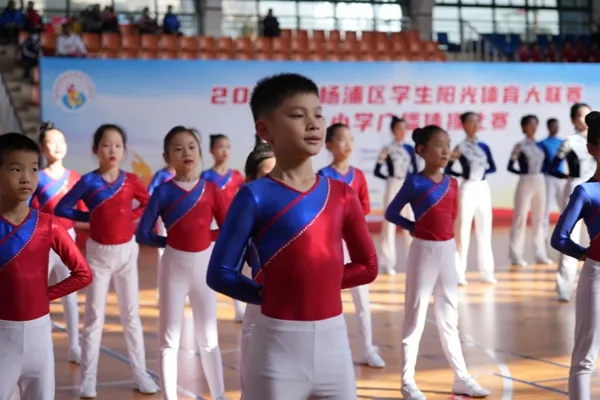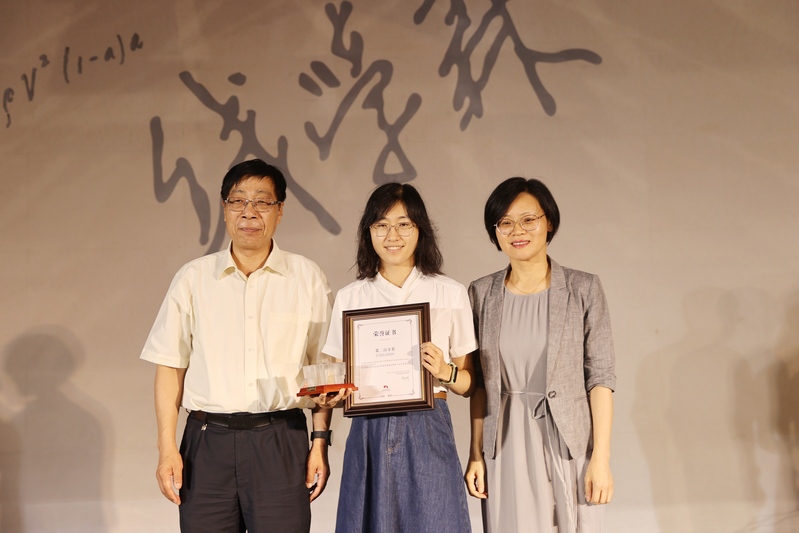Now that it is becoming a reality, what are the new academicians busy with? Jian Zhimin: The science fiction "Twenty Thousand Leagues Under the Sea" 150 years ago
[Editor's Note] General Secretary Xi Jinping pointed out during a recent inspection in Shanghai that promoting Chinese-style modernization cannot be separated from the strategic support of science and technology, education, and talents. Shanghai must be a good leader in this regard and accelerate its progress towards a scientific and technological innovation center with global influence. . Efforts should be made to cultivate a large number of cutting-edge talents with a sense of mission and create good conditions for them to display their talents. The additional election of academicians of the Chinese Academy of Sciences and the Chinese Academy of Engineering in 2023 was recently announced. A total of 18 scientific and technological experts in Shanghai were elected. What are they busy with recently? Jiefang Daily·Shangguan News launches a series of dialogue reports to listen to their scientific stories and their experiences on technological innovation.
[Introduction to Jian Zhimin] He has been engaged in teaching and scientific research in marine geology for a long time, and has made systematic innovations in the study of the Western Pacific paleo-ocean and East Asian paleoclimate, especially breakthroughs in the study of paleoclimate evolution mechanisms; serves as a national major scientific Chief scientist of the infrastructure "Undersea Scientific Observation Network", he presided over the 368th International Ocean Drilling Voyage and the "Deep Sea Warrior" manned deep diving voyage in the South China Sea, making important contributions to the scientific and technological development of my country's ocean deep drilling, deep netting, and deep diving. , is one of the young and middle-aged leaders in my country’s marine geology going international.
From a certain perspective, human beings' ability to "enter the earth" is far inferior to "going to heaven". It is even more difficult to "enter the earth" under the sea.
What are the secrets of the unfathomable ocean? In the eyes of Professor Jian Zhimin, newly elected academician of the Chinese Academy of Sciences in 2023 and dean of the School of Ocean and Earth Sciences of Tongji University, this is a rich mine for research. Growing up in an inland area, he devoted almost all his energy to marine research.
What attracts Jian Zhimin to devote himself to the scientific research of deep drilling, deep netting and deep diving for decades? What has he been busy with recently? A few days ago, Jian Zhimin, who had just gotten off the plane and returned to Shanghai, was interviewed by a reporter from Liberation Daily and Shangguan News. “It’s the magical ocean world that attracts me to keep exploring. The happiness lies in the process from unknown to knowing.”
Jiefang Daily·Shangguan News Jian Zhimin: I am very happy to be elected as an academician of the Chinese Academy of Sciences, because academicianship is a recommendation system, not an individual application. There are strict co-option procedures and conditions, so being elected is not "picking up a pocketbook". In fact, being elected as an academician is not the purpose of my own scientific research, but a natural gain in my pursuit of science. After being elected as an academician, I feel that my burdens and tasks have become heavier. I have to lead everyone forward and promote the development of the discipline.
Jiefang Daily·Shangguan News Jian Zhimin: Recently, the construction of the "Undersea Scientific Observation Network" has been promoted. This is a major national scientific and technological infrastructure under construction in China's marine field, led by Tongji University. This year, we built the "Tongji·Hai No. 1" East China Sea multi-circle observation tower in the East China Sea. As a landmark structure of the "Undersea Scientific Observation Network" national major scientific and technological infrastructure, this is my country's first three-dimensional tower-based observation platform and also my country's first offshore jacket-type fixed platform classified by China Classification Society.
The main structure of the "Tongji·Hai No. 1" multi-circle observation tower in the East China Sea consists of three parts: jacket, module, and wind measurement tower. It has a total design weight of 4,530 tons, an altitude of 103 meters, and a designed service life of 30 years. The platform will be equipped with at least 66 types and 195 sets of observation equipment. It is currently the observation tower with the strongest comprehensive scientific observation capabilities of the world's oceans. It can achieve all-round, comprehensive, long-term and real-time high-resolution measurements of the atmosphere, hydrosphere and lithosphere. rate stereoscopic observation. In addition to scientific observation instruments, mobile communication base station equipment such as 4G/5G and AIS and VHF base stations will also be installed on the wind measurement tower to effectively expand the range of surface communications and ship monitoring in the East China Sea.
At the same time, the current international ocean discovery plan will end in 2024, and the international community is currently intensively preparing for a new round of international ocean drilling plans after 2024. In the new round of international ocean drilling plans, China hopes to increase research in the deep-sea field and make greater contributions. Currently, China is preparing to build the world's fourth "International Rock Core Laboratory". This project has been included in Shanghai's new infrastructure plan for next year. By analyzing rock cores obtained from ocean drilling, we can know the detailed history of climate change and biological succession. Once this "International Core Laboratory" is completed, it will be open to the world and shared in the future, continue to serve scientists around the world, and help my country conduct scientific research on deep-sea cores, biological samples, and data in the waters along the "Belt and Road" initiative.
Jiefang Daily·Shangguan News Jian Zhimin: The ocean accounts for 71% of the earth's area, and the deep-sea area with a water depth of more than 2,000 meters accounts for 84% of the ocean. The deep seabed is the closest place on the earth's surface to the earth's interior, and many of the earth's mysteries can only be solved by drilling there. In the vast ocean, sunlight can only reach about 200 meters underwater. The sea below 200 meters is pitch black. Sometimes people don't know as much about the seabed as they do about the moon.
From an economic perspective, the deep sea is rich in minerals, oil, gas and biological resources. Currently, 60% of the world's newly growing oil resources come from deep sea. China's oil and gas resource exploration is gradually moving into the deep sea, which requires an understanding of the geological structure of the seabed.
Deep diving, deep drilling and deep netting are the three major technical means for exploring the mysteries of the deep sea today, namely deep diving exploration, ocean drilling and deep net observation. Deep diving is intuitive exploration of the deep sea, but it has limitations in space and time. Deep diving can only go to the bottom of the sea, and drilling down from the bottom of the sea is called deep drilling. The running time of deep diving can only be measured in hours. If you want long-term continuous observation, you have to put the sensor on the sea bottom and observe through the Internet. This is Deep Web. Deep diving, deep drilling and deep netting jointly shoulder the technical responsibility of deep sea exploration.
Jiefang Daily·Shangguan News Jian Zhimin: The seabed scientific observation network is equivalent to establishing a "weather station" and "laboratory" on the seabed. In terms of application, the seabed scientific observation network is the most effective means of early warning of earthquakes and tsunamis. 85% of the world's volcanoes are under the sea. Undersea devices can be deployed to monitor volcanic eruptions in real time. In the future, it may be possible to "live broadcast" submarine volcanic eruptions. There is a time lag between earthquakes, volcanoes and tsunamis. If the warning is given in advance, even 30 seconds in advance, many lives can be saved. If you want to understand changes in the marine environment and sediment transport, you need more direct long-term and continuous observations of the ocean.
In addition, the "three-deep combination" of deep diving, deep drilling, and deep netting can help us understand the unknown world, such as understanding seabed microorganisms. Some scientists have discovered that there are living microorganisms in rocks 800 meters below the seafloor, which we did not know before.
The relationship between the ocean and humans is not just about providing seafood as food for humans. The environment, disasters and resources of the ocean are all closely related to humans. Through deep-sea research, we can better understand the laws of earth evolution, protect our ocean home, and help humans and the ocean coexist in better harmony and develop sustainably.
["Innovation is an interest in itself"]
Jiefang Daily·Shangguan News Jian Zhimin: When I went to Tongji, I studied marine geology. If China wants to become a world maritime power, it must march into the deep sea.
my country's deep-sea technology started late but is developing rapidly. In 2012, the "Jiaolong" manned deep submersible dived to 7,062 meters, setting a world record for the largest diving depth of similar operational submersibles. In 2017, the 4,500-meter "Deep Sea Warrior" manned deep submersible was officially put into use, with a domestically produced autonomous rate of more than 95%. At present, the 10,000-meter-class full-water depth manned submersible "Struggle" has also been successfully operated, indicating that our country has entered the forefront of the world in deep diving.
my country is a newcomer to ocean drilling. It only joined in 1998, but in 1999 it successfully carried out the first international ocean drilling in the South China Sea to explore the history of monsoon climate evolution. From 2014 to 2018, my country completed three and a half drilling voyages in succession, revealing the history of basin rifting and seafloor expansion in the South China Sea, making the South China Sea the most studied marginal sea with deep processes.
China is intensively building its deep network, which is planned to be completed in 2025. Therefore, my research direction was established along with the national ocean strategy and international subject frontiers.
Jiefang Daily·Shangguan News Jian Zhimin: 2019 was my first deep dive to the bottom of the sea. I felt that I was really close to the bottom of the sea. In the past, it was all done by watching videos, but now you can almost touch the moving cold water corals, and the robotic hands are operating, and a sense of reality and intimacy arises spontaneously.
In the future, we plan to collect the oldest rocks and living cold-water corals from a wider area of the sea for research to reveal the deep seawater exchange between the South China Sea and the Pacific Ocean and the formation mechanism of the western Pacific marginal basin.
Jiefang Daily·Shangguan News Jian Zhimin: If you want to achieve success in scientific research, you must make a lot of sacrifices. My teacher, Academician Wang Pinxian, pioneered deep-sea research in China. He is like a beacon of our ocean science. Therefore, after 10 o'clock in the evening, many lights in our laboratory are still on and everyone is busy. Everyone's abilities vary, but everyone's efforts are the same.
Interest can be cultivated. In addition to talent, scientific research requires persistence. Once you delve into something, you will become interested in it. The interest of science is to discover the unknown and discover something different from the original knowledge. "Innovation is an interest in itself." When research goes in one direction, it becomes more and more interesting. Scientific research becomes a habit and seems to be a part of life.





